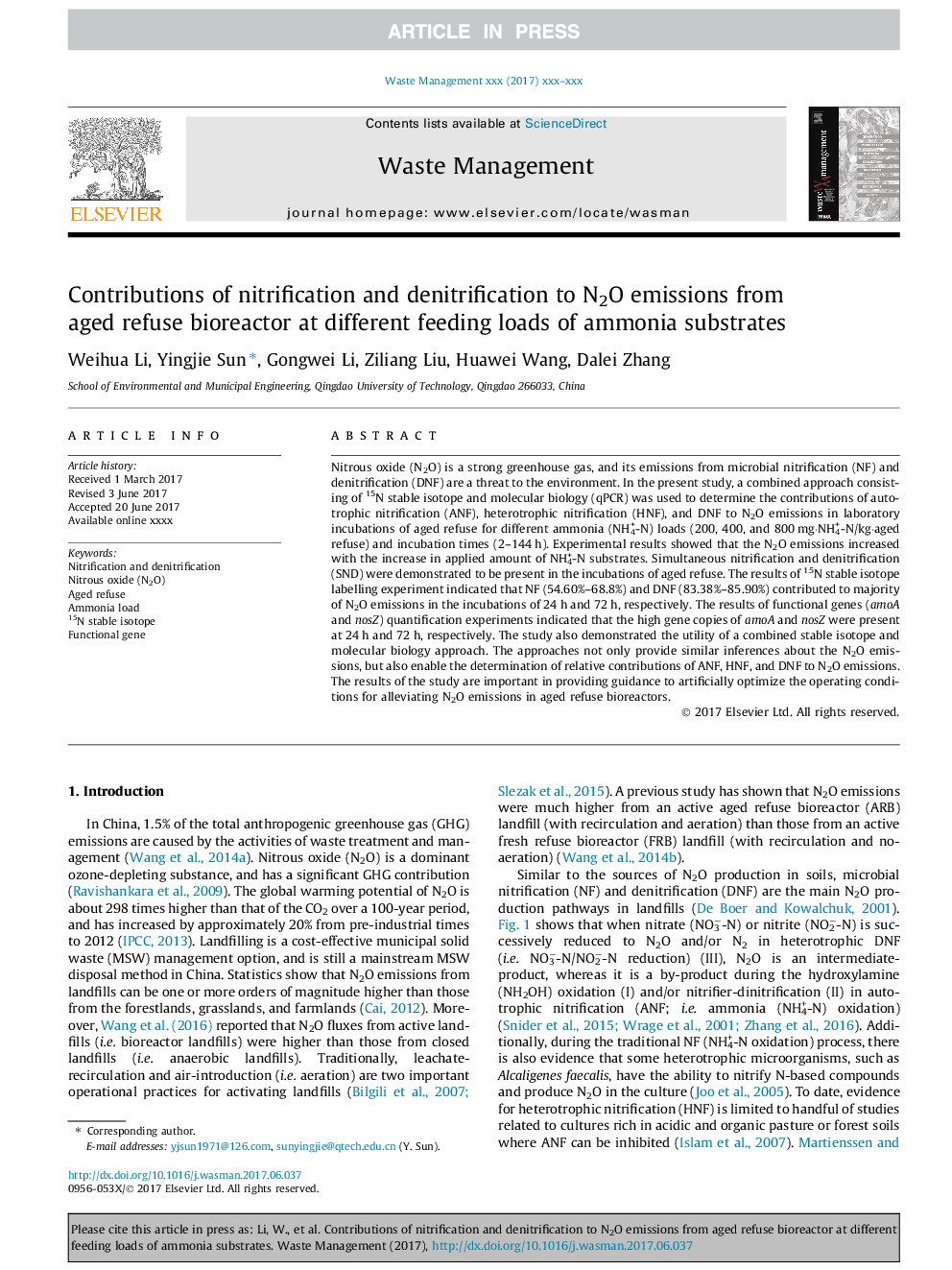| Article ID | Journal | Published Year | Pages | File Type |
|---|---|---|---|---|
| 5756579 | Waste Management | 2017 | 10 Pages |
Abstract
Nitrous oxide (N2O) is a strong greenhouse gas, and its emissions from microbial nitrification (NF) and denitrification (DNF) are a threat to the environment. In the present study, a combined approach consisting of 15N stable isotope and molecular biology (qPCR) was used to determine the contributions of autotrophic nitrification (ANF), heterotrophic nitrification (HNF), and DNF to N2O emissions in laboratory incubations of aged refuse for different ammonia (NH4+-N) loads (200, 400, and 800 mg·NH4+-N/kg·aged refuse) and incubation times (2-144 h). Experimental results showed that the N2O emissions increased with the increase in applied amount of NH4+-N substrates. Simultaneous nitrification and denitrification (SND) were demonstrated to be present in the incubations of aged refuse. The results of 15N stable isotope labelling experiment indicated that NF (54.60%-68.8%) and DNF (83.38%-85.90%) contributed to majority of N2O emissions in the incubations of 24 h and 72 h, respectively. The results of functional genes (amoA and nosZ) quantification experiments indicated that the high gene copies of amoA and nosZ were present at 24 h and 72 h, respectively. The study also demonstrated the utility of a combined stable isotope and molecular biology approach. The approaches not only provide similar inferences about the N2O emissions, but also enable the determination of relative contributions of ANF, HNF, and DNF to N2O emissions. The results of the study are important in providing guidance to artificially optimize the operating conditions for alleviating N2O emissions in aged refuse bioreactors.
Keywords
Related Topics
Physical Sciences and Engineering
Earth and Planetary Sciences
Geotechnical Engineering and Engineering Geology
Authors
Weihua Li, Yingjie Sun, Gongwei Li, Ziliang Liu, Huawei Wang, Dalei Zhang,
